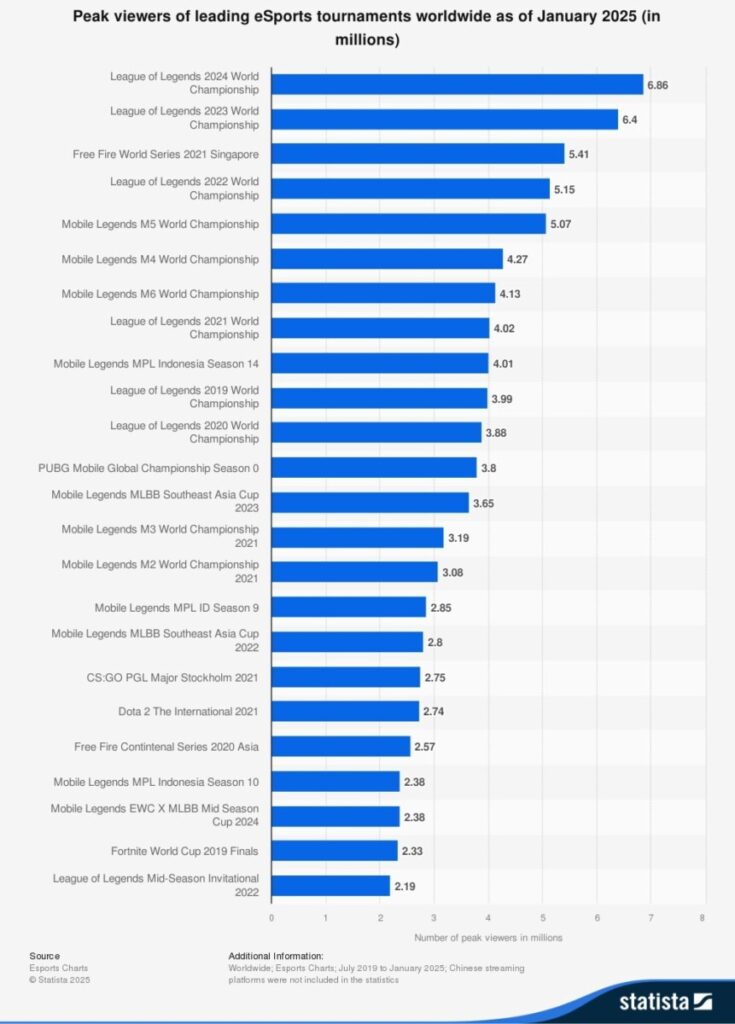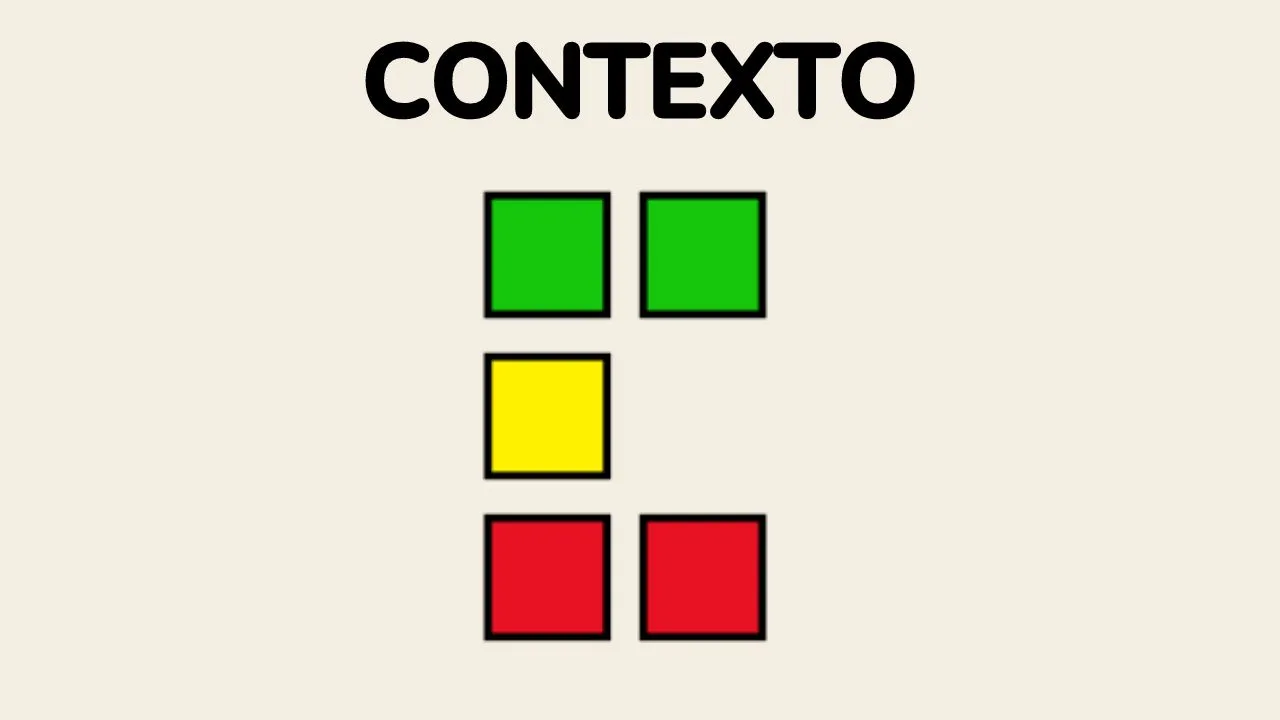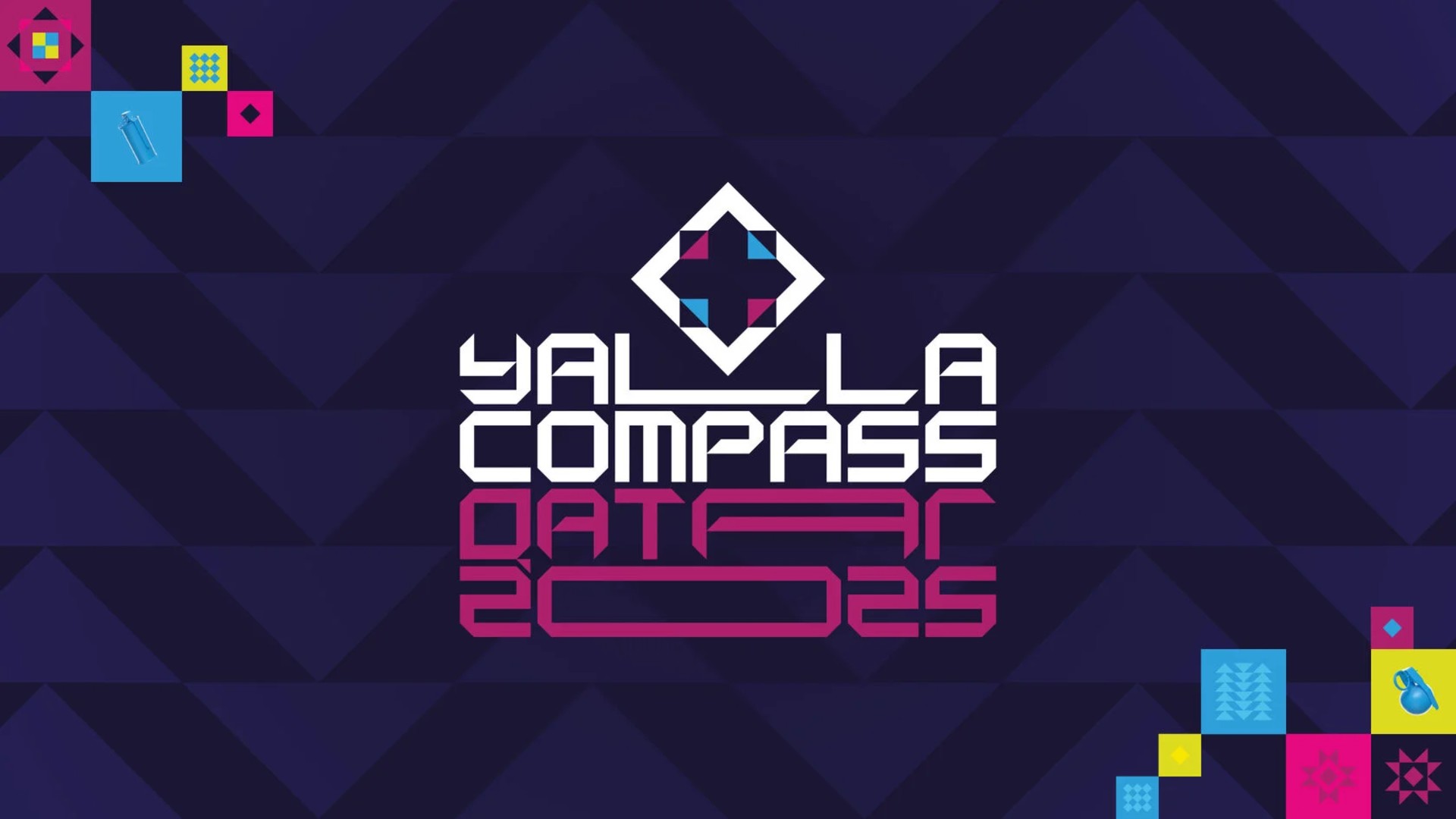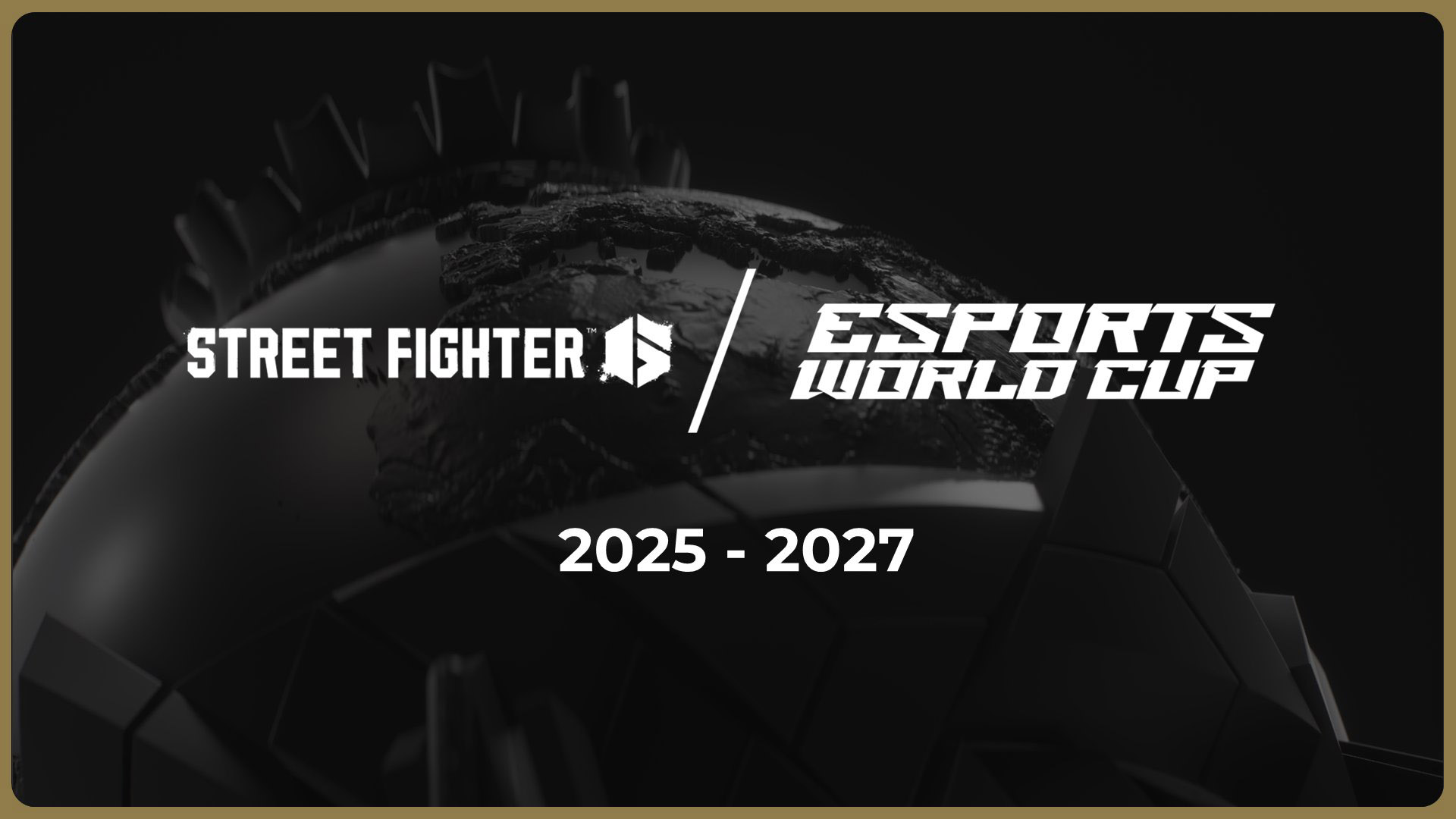Centralized vs. open tournaments in esports: Key differences
Centralized and open tournaments are the main types of tournaments in esports. For example, the League of Legends World Championship and Call of Duty League are centralized events created by the publishers. Meanwhile, tournaments like the Evolution Championship Series and Fortnite Champion Series are open and allow anyone to apply and test their skills. With … Continued The post Centralized vs. open tournaments in esports: Key differences appeared first on Esports Insider.

Centralized and open tournaments are the main types of tournaments in esports. For example, the League of Legends World Championship and Call of Duty League are centralized events created by the publishers. Meanwhile, tournaments like the Evolution Championship Series and Fortnite Champion Series are open and allow anyone to apply and test their skills.
With esports already a multi-billion dollar industry, thanks to sponsorships and broadcasting rights, new and existing tournaments are finding ways to appeal to new viewers and players almost every year.
However, with the business constantly changing, what is the preferred tournament format in esports in 2025 and beyond? We’ve created a guide to help lay out what centralized and open tournaments mean and what their respective future trends could be in the coming years.
TL;DR
- Centralized tournaments are controlled by a single entity (usually the game publisher), offering structure, high production quality, and reliable sponsorship – but limiting access for smaller teams.
- Open tournaments welcome all players through qualifiers, promoting new talent and community engagement, though they often lack consistent funding and regulation.
- Hybrid models are emerging, blending the stability of centralized formats with the accessibility of open ones to attract wider audiences.
- Viewer experience varies: centralized formats offer polished, predictable events, while open formats deliver surprise matchups and grassroots excitement.
- Future trends suggest more collaboration between publishers and communities, which could lead to decentralized, blockchain-powered events.
Understanding centralized tournaments in esports
What are centralized tournaments in esports?
Centralized tournaments in esports are structured events arranged by a single governing body, making sure that rules and schedules are followed at all times.
Those who compete or attend these tournaments will likely see consistent branding by the event sponsors and a standardized qualification structure for competing players.
Examples of centralized tournaments usually consist of the most popular esports games, such as:
- Call of Duty League
- Overwatch Champions Series
- League of Legends World Championship
- Valorant Champions Tour
Pros & cons of centralized tournaments
 Pros
Pros
- High production values
- Consistent competition structure
- Well funded
- More appealing for sponsorships
- Reliable for esports betting
 Cons
Cons
- Risk of monopolizing the game
- Could be difficult for lesser-known teams to compete
- High entry fees for some tournaments
- More challenging for new teams to match sponsors
- High franchise costs are common
Understanding open tournaments
What are open tournaments in esports?
Open tournaments in esports allow any player or team to enter, no matter how well-known. This means that rising talent have a chance of competing at a high level and potentially win the tournament.
Open tournaments are a common type in esports due to this reason, as organizers and sponsorships try to ensure that new players have a fair chance of competing, and there’s no risk of favoritism.
Examples of open tournaments also include some of the most popular esports games, such as:
- Evolution Championship Series
- Fortnite Champion Series
- Counter-Strike 2 Major Championships
Pros & cons of open tournaments
 Pros
Pros
- Great for discovering new talent
- Lower barrier for entry
- Encourages growth for lesser-known teams
- Anyone can take part
- Potentially exciting matchups
 Cons
Cons
- Could be harder to attract new sponsorships
- Weaker oversight by regulators
- Competition levels can be inconsistent
- A high risk of match-fixing
- Financially less stable due to lesser-known teams
Centralized vs. open tournaments: What’s the difference?
Centralized vs. open tournaments in esports can differ significantly, but in several cases, both formats suit certain teams. Let’s explore the major distinctive features
| Aspect | Centralized tournaments | Open tournaments |
|---|---|---|
| Control & governance | Run by a single body (usually the game publisher) | Organized by multiple independent entities |
| Rules & regulations | Standardized set of rules, formats, and policies | Rules vary between organizers |
| Funding | Funded by the game publisher and/or sponsors | Funded by communities, crowdfunding, or sponsorships |
| Prize distribution | Prize pool is determined by the organizer | Prize money can vary based on donations or other decentralized sources |
| Monetization | Revenue from sponsorships, broadcasting rights, and in-game purchases like passes | Shared revenue from ads, betting, and crypto-based models |
| Entry requirements | Selected teams/leagues invited to participate | Open to anyone, often through qualifiers |
| Longevity | Backed by developers and long-term sponsorships, enabling multi-year events | Dependent on crowdfunding goals and community interest |
So, how do centralized esports tournaments work vs. open tournaments exactly?
Governance & control
Open tournaments allow a bunch of organizers to host events with fewer restrictions and a less formal format that can be easier for less experienced players and teams.
When it comes to centralized tournaments, these are managed by a single organizer, such as Riot Games with its League of Legends World Championship, making sure that strict guidelines are followed for every team taking part.
However, it’s important to note that some tournaments can fall into both categories. For example, Dota 2: The International, hosted by Valve, invites teams but has qualification matches through open circuits, meaning that this tournament falls into a hybrid of sorts.
Accessibility for teams & players
Accessibility can be a big differentiator for the two types of tournament formats in esports.
For example, open tournaments allow anyone to compete via qualifying matches, lowering the barrier-to-entry to almost nothing.
However, centralized tournaments usually require invitations or high entry fees, which can be limiting to certain teams.
Financial & sponsorship model
Open tournaments usually rely on prize pools and independent sponsorships, which can make their financial models more unpredictable.
Conversely, centralized tournaments can secure longer-term funding through broadcasting rights, sponsorships, and franchise fees.
Centralized vs. open vs. decentralized tournaments
First, let’s clarify the difference between centralized, open, and decentralized tournament concepts.
Are open tournaments and decentralized tournaments in esports the same?
No. Open tournaments are open to anyone, while “decentralized tournaments” use blockchain technology to store game data.
Can centralized esports tournaments be decentralized?
Yes, centralized esports tournaments can also be decentralized, using blockchain and smart contracts to create more transparent, fair, and community-driven platforms.
With decentralized esports tournaments, games can run on blockchain, storing game data like skins, weapons, and more via players’ crypto wallets. However, the uncertainty of crypto and Web3 in general could make the decentralized esports tournament ecosystem more unpredictable and unreliable for some, leading them to stick with established events that games like Valorant and Overwatch offer.
Format’s impact on the esports ecosystem
Viewer engagement & fan experience
Both centralized and open tournaments offer different tournament styles in esports for fans and players alike.
For instance, open events can offer unpredictable matchups with players and teams who may not have taken part before, which could give a lot of excitement to viewers, potentially increasing viewership.
For centralized tournaments, whilst many offer high-quality events at well-known stadiums worldwide, their consistent structure can be at risk of being repetitive to viewers over time.
Longevity & sustainability of esports titles
Although centralized tournaments can obtain long-term investment via sponsorships and exclusive broadcasting rights, viewers may become bored by seeing events being hosted in the same way, year after year.
This can change if new games or updates to existing games give players new ways of approaching certain matches, but there is a risk of stagnation over time.
For open tournaments, the playing field can change more frequently due to new talent approaching games in different ways. Whether that’s via VR gaming or mobile esports, it could attract new viewers and players alike. These play types could potentially sustain esports and titles in the long run.

Future trends & predictions
Hybrid models & evolving structures
Both centralized and open tournaments are moving toward combinations of both models to try to appeal to new viewers and players, where anyone can compete in structured, established leagues.
With new consoles such as the Nintendo Switch 2 releasing in June, this can mean new games could be entering tournaments.
Potential shifts in publisher control
As esports as a whole continues growing, publishers like Valve and Riot Games will likely attempt to expand their own tournaments, establishing new leagues and events.
In turn, communities who are passionate about games like Counter-Strike 2 and Valorant could look at their own independent tournaments adjacent to publishers.
This way, new growth could be given to the esports industry as a whole and sustain existing tournaments as well.
The role of community-driven tournaments
Although community-driven tournaments are mostly exclusive to open tournaments, there’s a growing discussion that publishers will eventually be involved in these to raise awareness of their events and games for new players as a way to minimize complacency and potential boredom for viewers.
This means that future trends could see both publishers and communities working together for new leagues and tournaments that could drive long-term investment for both parties.
Conclusion
Centralized and open tournaments in esports are constantly changing, mainly due to the ever-growing needs of its players and viewers who take part in many events hosted worldwide across the year.
With esports being recognized by the International Olympic Committee (IOC), we could see the lines of centralized and open tournaments blur due to the requirements that some teams may need to fulfill.
However, the potential viewership could reach billions, and both centralized and open tournaments are ready to adapt to new regulations and trends.
FAQs
Esports tournaments follow standard formats like league play and eliminations, all dependent on the type of gaming event.
Organizing an esports tournament is dependent on several factors: deciding on a game, setting rules, the type of league, the type of prize, and much more.
Centralized tournaments could be preferable due to consistent schedules, reliable data for betting-odds, and regulated competition.
Requiring a license depends on rules set by the game publisher, local laws where the event is being held, and regulations concerning entry fees and prizes.
References
- https://www.olympics.com/en/olympic-esports-games/ (Olympic Esports Games)
The post Centralized vs. open tournaments in esports: Key differences appeared first on Esports Insider.





















































































































































































































.jpg)




















































